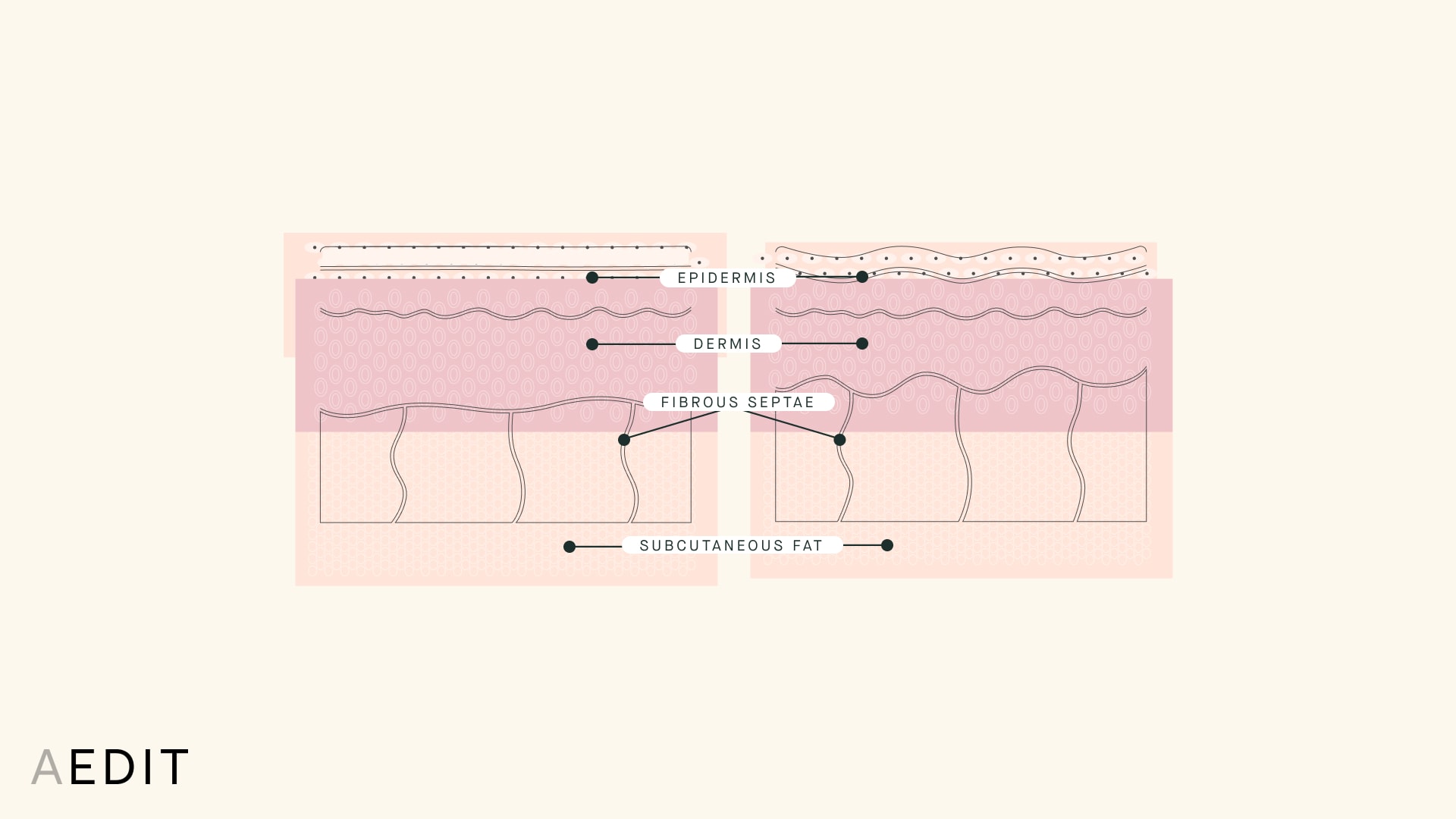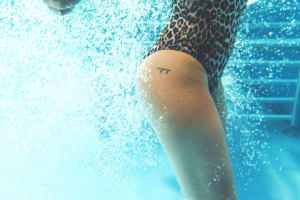
The Skinny
When it comes to cellulite, there are numerous misconceptions. Let’s clear some things up. Cellulite can affect individuals of any body weight and body fat level; it is more common in women; it tends to worsen with age; and, for some, diet and exercise is not sufficient to get rid of stubborn pockets of cellulite (check out our complete guide to Cellulite Concerns). The 'orange peel' or 'cottage cheese' descriptions of cellulite are, if we’re being honest, kind of bizarre, but they are also accurate. Cellulite is caused by a combination of structural and, sometimes, hormonal factors. Fortunately, the diversity and availability of treatments to combat cellulite are as ubiquitous as the condition itself.
AEDIT
Before & After Images by Provider
This Album Contains Explicit Content. Sign up or Login to Browse Real Before & Afters
Before & After Images by Provider
Cellulite Removal Solutions
The Specifics
Who needs a cellulite procedure?
The main cause of cellulite is an accumulation of body fat that causes the fibrous bands under the skin to pull down, giving the skin a dimpled, 'orange peel' look.
The Anatomy of Cellulite

Research concludes cellulite appears more often in women than it does men. Women may begin developing cellulite deposits from adolescence well into their adult life. Although cellulite appears more frequently in women, men are not immune. Unhealthy lifestyle choices, such as poor diet and excess weight can contribute to cellulite buildup in men-mainly around the lower abdominal area.
An exercise program such as strength training or aerobic exercises can assist with skin tightening and reducing cellulite appearance. Diet and exercise lifestyle modifications, however, are entirely dependent on consistency.
There are three main classifications of cellulite:
Unfortunately, sometimes despite weight loss, a healthy diet, exercise, and good lifestyle choices, areas of stubborn cellulite can persist. This is where the professionals can help.
Of note, in some cases individuals experiencing hard or edematous cellulite should seek treatment in a timely manner due to the potential health risks associated with the circulatory issues represented by these types of cellulite.
What can you expect from a cellulite procedure?
Reducing and controlling cellulite buildup through diet and exercise takes time and willpower. And considering the rate at which individuals lose weight can differ, some may see results sooner than others.
Non-surgical procedures that utilize gels work to thicken the skin decreasing the appearance of dimples. Energy-based therapies, such as ultrasound wave therapy, work to break apart the fat layers deep under the skin. Both of these techniques typically require regular maintenance.
Surgical procedures completely remove the cellulite, but come with downtime, side effects, and ultimately may not completely improve the dimpling of the skin. In some cases treatments like liposuction may actually worsen the dimpling. It is also important to note that surgical procedures may remove cellulite, but the fat accumulations will continue to be subject to aging, diet, exercise, and hormonal changes.
Given the formation of cellulite is a lifelong process, most procedures can not entirely guarantee permanent results, and in most cases multiple and ongoing treatments will be necessary.
When should you seek a cellulite procedure?
When you should consider treatment is entirely dependent on your desired personal aesthetic. We all have cellulite, and let’s be honest, it bothers some of us more than others. If you keep active, are someone who is at a stable and maintainable weight, and are in overall good health, but are still frustrated by stubborn areas of cellulite you may benefit from a professional procedure.
As previously mentioned, individuals experiencing hard cellulite build-up should seek treatment in a timely manner due to the possibility of an underlying circulatory concern.
Why should you seek a cellulite procedure?
Seeking out professional assistance with correcting and managing cellulite is mostly a decision based on your desired personal aesthetic. A combination of lifestyle changes (think: diet and exercise and ditching cigarettes) in combination with professional procedures can provide significant and lasting benefits.
If you feel you would benefit from the physical and emotional benefits a cellulite removal procedure can provide, there are an array of different techniques available. Procedures in the form of massages, creams, surgeries, and even energy-assisted therapies can all correct and combat cellulite. To determine the best treatment for your unique concern, consult with a board certified plastic surgeon or dermatologist.
Professional Cellulite Removal
Procedures to alter the soft tissues, like fat and connective tissue, can help to lessen the appearance of cellulite and encourage the body to rejuvenate the area.
For Flaccid Cellulite
For Compact Cellulite
For Edematous Cellulite
At-Home Cellulite Removal
Cellulite may respond to methods that improve and stimulate blood circulation (think: stretching regularly, keeping active, not sitting or standing for too long, taking hot baths, and using warm water jets to massage the area). Additionally, compression socks or leggings can be worn throughout the day or at home to assist with blood flow.
The Takeaway
Exercising, eating healthy, and making good lifestyle choices will all help to reduce the appearance of cellulite. These DIYs are not cure-alls, however, and sometimes stubborn cellulite needs a little something extra. Professional invasive and noninvasive treatments under the care of a board certified plastic surgeon or dermatologist can give your cellulite the last kick it needs to have it gone for good.















